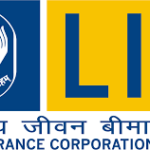Family financial planning shapes a secure future, offering peace of mind and stability. In the hustle of daily life, it’s easy to overlook how vital good financial habits are for families. Effective planning doesn’t just help in managing money; it also prepares families for emergencies and opportunities ahead. A robust financial strategy not only safeguards your current lifestyle but also enhances the quality of life for future generations.
Why Family Financial Planning Matters
The Importance of Proactive Financial Planning
Being proactive with family finances means preparing for what’s ahead. It helps manage risks, save for large expenses, and ensure children receive a quality education. Ignoring financial matters can lead to stress and unexpected difficulties. Planning is like laying a strong foundation for your family’s future.
Statistics on Family Finances and Financial Literacy
Research shows that nearly 60% of families live paycheck to paycheck. Many lack a basic understanding of financial concepts, which can hinder their ability to make informed decisions. The need for improved financial literacy is essential for every family, as knowledge can lead to better financial outcomes.
Setting the Stage: Our Journey to Financial Security
Every family has its unique story regarding finances. Starting with simple steps, anyone can embark on a journey towards financial security. Recognizing where you stand financially is the first step, followed by taking actionable steps to create a brighter future.
Budgeting and Expense Tracking: The Foundation of Family Finances
Creating a Realistic Family Budget: Methods and Tools
A family budget acts as a roadmap for your financial journey. Building one involves:
- Listing monthly income sources
- Detailing fixed and variable expenses
- Allocating funds for savings and debt repayment
Using tools like budgeting apps or even spreadsheets can simplify this process. Popular apps include Mint, YNAB (You Need a Budget), and PocketGuard.
Tracking Expenses: Apps, Spreadsheets, and Manual Methods
Keeping track of spending is crucial. Consider these methods:
- Apps: Quick and easy to log every transaction.
- Spreadsheets: Great for those who prefer a detailed view.
- Manual Methods: Write down expenses as they occur in a notebook.
Whichever method you choose, stay consistent to see where your money is going.
Analyzing Spending Patterns and Identifying Areas for Improvement
Reviewing your spending monthly can help identify patterns. Are dining out expenses exceeding your budget? Are there subscriptions you don’t use? Recognizing these habits can lead to healthier spending choices.
Managing Debt Effectively: Strategies for Reducing Financial Burden
Types of Debt and Their Implications on Family Finances
Debt can be overwhelming. Common types include:
- Credit card debt: Often has high interest rates.
- Student loans: Essential for education but can linger for years.
- Mortgages: Major financial commitment but necessary for homeownership.
Understanding these can help families prioritize repayments and manage their budgets better.
Developing a Debt Repayment Plan: Snowball vs. Avalanche Methods
When tackling debt, two effective strategies are:
- Snowball Method: Focus on paying off the smallest debt first for quick wins.
- Avalanche Method: Prioritize high-interest debt to save on interest over time.
Choose the method that aligns with your financial goals and motivates you to stay on track.
Real-world Example: Successfully Navigating High-Interest Debt
Consider a family with $10,000 in credit card debt at 20% interest. By focusing on the smallest balance first (using the Snowball Method), they can find motivation and see progress. Alternatively, tackling the highest interest first can save money in the long run.
Saving and Investing for the Future: Building Long-Term Wealth
Establishing Emergency Funds: How Much is Enough?
An emergency fund is essential for financial security. Aim for 3 to 6 months’ worth of living expenses saved. This cushion protects your family during unexpected job loss or costly repairs.
Investing for the Future: Diversification and Risk Management
Start investing early to benefit from compound interest. Consider diverse assets such as:
- Stocks: Higher risk but can yield higher returns.
- Bonds: Generally safer, providing steady income.
- Mutual funds: Great for beginners, offering built-in diversification.
Assess your risk tolerance to create a tailored investment plan.
Retirement Planning: 401(k)s, IRAs, and Other Retirement Vehicles
Planning for retirement is crucial. Some options include:
- 401(k): Offered by employers, often with matching contributions.
- IRA (Individual Retirement Account): Personal investment account with tax advantages.
Regular contributions can significantly affect your retirement savings over time.
Protecting Your Family: Insurance and Estate Planning
Health Insurance: Coverage Options and Considerations
Choosing the right health insurance plan is vital. Evaluate coverage options based on family needs, considering:
- Monthly premiums
- Deductibles and co-pays
- Prescription drug coverage
Life Insurance: Protecting Your Family’s Financial Future
Life insurance ensures your family is financially secure in case of the unexpected. Consider term life insurance for affordability, or whole life insurance for a cash-value component.
Estate Planning: Wills, Trusts, and Power of Attorney
Creating a will helps ensure your assets are distributed as you wish. A trust can further manage your estate and help avoid probate. Assigning a power of attorney ensures financial decisions are made by a trusted person if you’re unable to do so.
Teaching Children About Money: Financial Literacy for the Next Generation
Age-Appropriate Financial Lessons
Start teaching kids about money early. Simple lessons about saving, spending, and sharing can instill good habits. Use examples they can relate to, like saving for a toy.
Budgeting and Saving Strategies for Kids and Teens
Encourage children to manage their own small budgets. For teens, open a bank account to learn about deposits and withdrawals. Use allowances as a tool for practicing money management.
Resources for Financial Literacy Education
Several resources can guide you in teaching kids about finances, such as:
- Books like “The Berenstain Bears’ Trouble with Money”
- Online courses for teens
- Interactive apps designed for financial education
Conclusion: Taking Control of Your Family’s Financial Well-being
Key Takeaways: Actionable Steps for Financial Success
- Create and stick to a budget.
- Track all spending methods.
- Develop a debt repayment plan.
- Regularly save and invest.
- Protect your family with insurance and estate planning.
The Long-Term Benefits of Proactive Financial Planning
Effective financial planning leads to reduced stress and better quality of life. Over time, families can build wealth and achieve long-term security.
Resources for Further Learning and Support
A wealth of resources exists for additional learning. Websites such as the National Endowment for Financial Education (NEFE) and the Financial Literacy and Education Commission (FLEC) offer valuable content to help families navigate finances effectively.
Taking control of family finances isn’t just about managing money; it’s about building a life of security, opportunity, and happiness. Begin today to pave the way for a brighter financial future.






